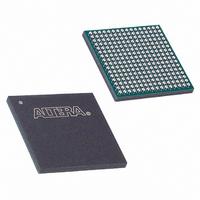EPM1270F256C5N Altera, EPM1270F256C5N Datasheet - Page 16

EPM1270F256C5N
Manufacturer Part Number
EPM1270F256C5N
Description
IC MAX II CPLD 1270 LE 256-FBGA
Manufacturer
Altera
Series
MAX® IIr
Specifications of EPM1270F256C5N
Programmable Type
In System Programmable
Delay Time Tpd(1) Max
6.2ns
Voltage Supply - Internal
2.5V, 3.3V
Number Of Logic Elements/blocks
1270
Number Of Macrocells
980
Number Of I /o
212
Operating Temperature
0°C ~ 85°C
Mounting Type
Surface Mount
Package / Case
256-FBGA
Voltage
2.5V, 3.3V
Memory Type
FLASH
Number Of Logic Elements/cells
1270
Cpld Type
FLASH
No. Of Macrocells
980
No. Of I/o's
212
Propagation Delay
7.5ns
Global Clock Setup Time
1.2ns
Frequency
304MHz
Supply Voltage Range
3V To 3.6V
Rohs Compliant
Yes
For Use With
544-2380 - KIT DEV MAXII W/EPM 1270N
Lead Free Status / RoHS Status
Lead free / RoHS Compliant
Features
-
Other names
544-1336
EPM1270F256C5N
EPM1270F256C5N
Available stocks
Company
Part Number
Manufacturer
Quantity
Price
Company:
Part Number:
EPM1270F256C5N
Manufacturer:
ALTERA
Quantity:
73
Company:
Part Number:
EPM1270F256C5N
Manufacturer:
ALTERA
Quantity:
885
Part Number:
EPM1270F256C5N
Manufacturer:
ALTERA/阿尔特拉
Quantity:
20 000
Part Number:
EPM1270F256C5NTRAY
Manufacturer:
ALTERA
Quantity:
20 000
2–8
LUT Chain and Register Chain
addnsub Signal
LE Operating Modes
MAX II Device Handbook
In addition to the three general routing outputs, the LEs within an LAB have LUT
chain and register chain outputs. LUT chain connections allow LUTs within the same
LAB to cascade together for wide input functions. Register chain outputs allow
registers within the same LAB to cascade together. The register chain output allows an
LAB to use LUTs for a single combinational function and the registers to be used for
an unrelated shift register implementation. These resources speed up connections
between LABs while saving local interconnect resources. Refer to
Interconnect” on page 2–12
connections.
The LE’s dynamic adder/subtractor feature saves logic resources by using one set of
LEs to implement both an adder and a subtractor. This feature is controlled by the
LAB-wide control signal addnsub. The addnsub signal sets the LAB to perform either
A + B or A – B. The LUT computes addition; subtraction is computed by adding the
two’s complement of the intended subtractor. The LAB-wide signal converts to two’s
complement by inverting the B bits within the LAB and setting carry-in to 1, which
adds one to the least significant bit (LSB). The LSB of an adder/subtractor must be
placed in the first LE of the LAB, where the LAB-wide addnsub signal automatically
sets the carry-in to 1. The Quartus II Compiler automatically places and uses the
adder/subtractor feature when using adder/subtractor parameterized functions.
The MAX II LE can operate in one of the following modes:
■
■
Each mode uses LE resources differently. In each mode, eight available inputs to the
LE, the four data inputs from the LAB local interconnect, carry-in0 and carry-
in1 from the previous LE, the LAB carry-in from the previous carry-chain LAB, and
the register chain connection are directed to different destinations to implement the
desired logic function. LAB-wide signals provide clock, asynchronous clear,
asynchronous preset/load, synchronous clear, synchronous load, and clock enable
control for the register. These LAB-wide signals are available in all LE modes. The
addnsub control signal is allowed in arithmetic mode.
The Quartus II software, in conjunction with parameterized functions such as library
of parameterized modules (LPM) functions, automatically chooses the appropriate
mode for common functions such as counters, adders, subtractors, and arithmetic
functions.
“Normal Mode”
“Dynamic Arithmetic Mode”
for more information about LUT chain and register chain
© October 2008 Altera Corporation
Chapter 2: MAX II Architecture
“MultiTrack
Logic Elements














